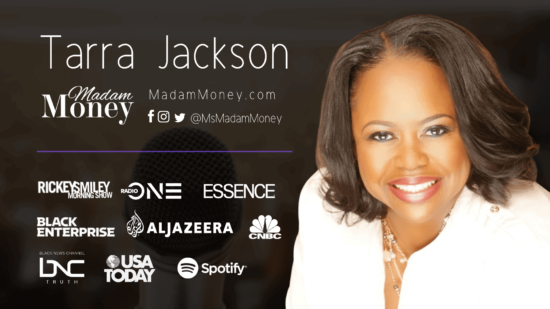Segmenting your donors allows you to send personalized messages that resonate with them and increase engagement. Check out these donor segmentation strategies.
By Gabrielle Perham
With so much information available at their fingertips, it can be overwhelming and difficult for your supporters to fully absorb it all. Among the thousands of brands, businesses, and other charitable organizations out there, your nonprofit has to figure out how to cut through the clutter and stand out to current and potential donors.
One of the top ways to grab donors’ attention is segmentation. By grouping donors into relevant segments, you can develop personalized messages that resonate with different subsets of your audience and encourage them to continue lending their support.
In this guide, we’ll present several different donor segmentation strategies your organization can leverage to personalize its communications.
1. Demographics
One of the simplest ways to segment your donors is by demographics. This information helps you understand your donors’ backgrounds and communication preferences. Demographics encompass a variety of different data points, such as:
- Age
- Gender
- Level of education
- Income range
- Marital status
- Geographic location
Insights from demographic data can help you learn more about your supporters and how they want to engage with your organization. For example, let’s say you segment donors by age and find that you have a large proportion of Millennials in your supporter base. Using that information, you can launch campaigns on the platforms Millennials are most likely to frequent, such as Facebook, Instagram, and YouTube.
Alternatively, you may use location data to send specialized newsletters highlighting relevant events and opportunities in people’s local areas. Start by determining which cities are most popular among your donor base. Then compile events hosted by your organization and similar nonprofits that your supporters might be interested in attending.
If you don’t have the demographic data you need readily available, consider enhancing your database through a demographic data append. This process involves using third-party sources to supplement your database and learn more about your supporters.
2. Giving History
Group donors based on their giving history, frequency, and patterns to tailor your fundraising strategies and stewardship efforts accordingly. Examples of segments in this category may include:
- One-time donors
- Recurring donors
- Major donors
- Campaign or cause-specific donors
Align your communication frequency with donors’ giving frequency. For instance, you may send monthly donors an update about the impact of their contributions once a month whereas you may contact annual donors every quarter with updates on your work.
You can also use giving history data to match your appreciation methods to donors’ level of commitment to your organization. For example, you should reserve more personal outreach methods, like phone calls, and more intensive donor appreciation tactics, like a donor wall, for major donors.
3. Donor Lifecycle Stage
Segmenting donors based on where they are in the donor lifecycle helps you meet their specific needs and move them through the donor journey more efficiently. The segments you create based on lifecycle stage may include:
- New donors
- Active donors
- Lapsed donors
- Reactivated donors
- Donors with upgrade potential
This segmentation strategy can set you up for long-term, sustainable success by focusing on retaining current donors and re-engaging lapsed donors. You may send new donors background information about your organization while you thank active donors for their continued support. Use more urgent calls to action to win back lapsed donors and welcome reactivated donors back to your organization with updates on what they’ve missed.
4. Engagement Level
Some of your donors are likely involved in other aspects of your organization beyond donating. Maximize donor involvement and participation by sending them relevant communications based on their engagement level and history.
For instance, you may create segments for donors who are also:
- Regular volunteers
- Event attendees
- Advocates of your cause
- Peer-to-peer fundraisers
Show donors that you care about their nonmonetary contributions to your organization by referencing their specific involvement in donation requests and thank-you messages, and send them information about upcoming opportunities they may be interested in.
5. Charitable Interests
If your mission encompasses a broad array of different cause areas and services, you may segment donors based on which causes, programs, or initiatives they’re most interested in supporting. These groups allow you to reach out to your donors with personalized appeals for relevant campaigns and offer opportunities that resonate with them.
For example, United Way’s website explains that the organization has three focus areas: health, education, and economic mobility. Depending on which areas their donors are most passionate about, this nonprofit’s fundraising team may group donors into three corresponding segments and send them updates and appeals related to their interests.
6. Giving Capacity
When you know donors’ giving capacity, you can tailor your donation asks accordingly and identify potential major donors. To determine giving capacity, conduct a wealth screening that examines the financial means of your existing donors.
According to AlumniFinder, wealth screening provides your organization with the following donor data points:
- Business affiliations
- Stock ownership
- Home value
Besides determining giving capacity, this information can also help you capitalize on matching gift opportunities. 360MatchPro’s matching gift statistics guide explains that although many employers will match their employees’ donations to eligible nonprofits, 78% of donors are unaware if their company offers matching gifts.
To raise awareness of matching gifts and secure more donation revenue for your organization, use employer data from your wealth screening to group employees who are eligible for matching gifts and highlight these opportunities for them.
7. Communication Preferences
Collect and store information about your supporters’ communication preferences in your donor database so you can reach your audience on the platforms they prefer, increasing the likelihood of engagement.
Survey your donors to determine whether they’d like to be contacted via one or all of the following:
- Direct mail
- Phone calls
- Social media
- Text messages
Then, create relevant groups in your database, and sync them with your email marketing and social media management platforms so you can easily communicate with your supporters on their preferred channels.
Engaging your donors means keeping your organization top of mind through innovative, personalized communications. By segmenting your donor base, you offer a better, more individualized supporter experience and can build stronger donor relationships. Don’t be afraid to create more specific segments within these groups, too; the more specific you can get, the more relevant your communications will be.
Gabrielle Perham is the Director of Marketing & Sales Operations for Deep Sync. She joined the organization in 2017 and brings 20 years of experience in strategic marketing, branding, communications, sales enablement, and digital marketing. With a roll-up-your-sleeves-and-get-it-done attitude and a big-picture mindset, Gaby loves solving marketing and business challenges. She earned both a B.S. in Marketing and an M.B.A. in Marketing Management from the University of Tampa. Gaby enjoys spending time with her fiercely outspoken daughter; hiking and kayaking; rocking out in the first row of a live show; and giving back to her local community.




